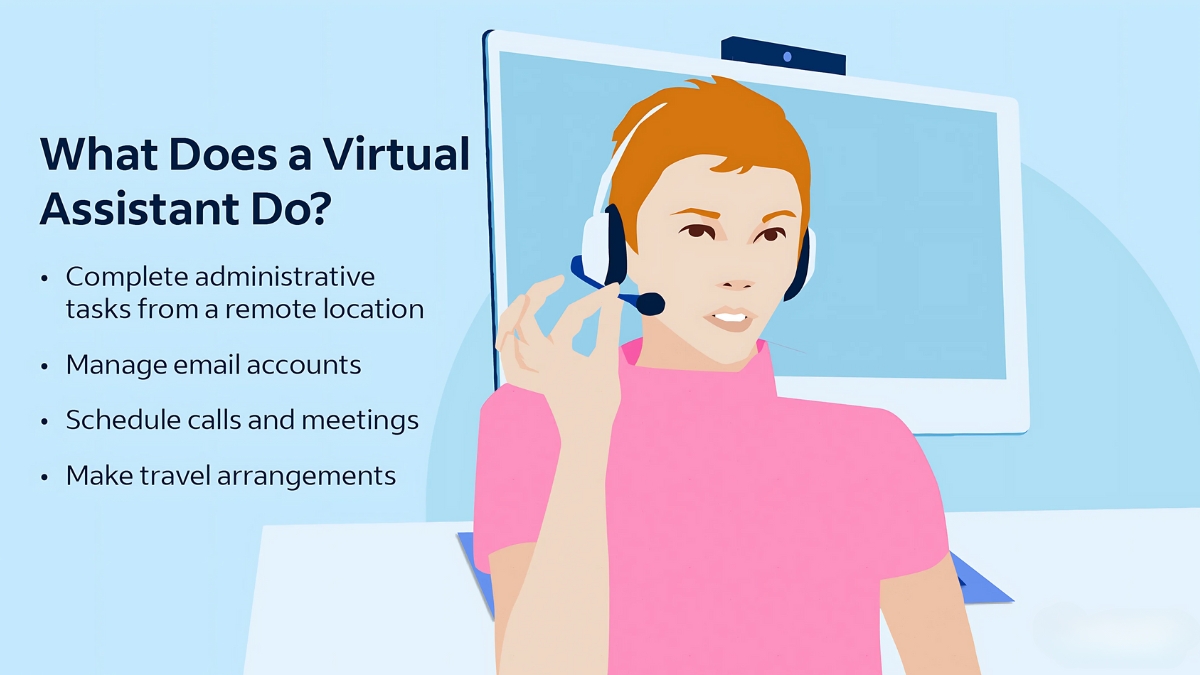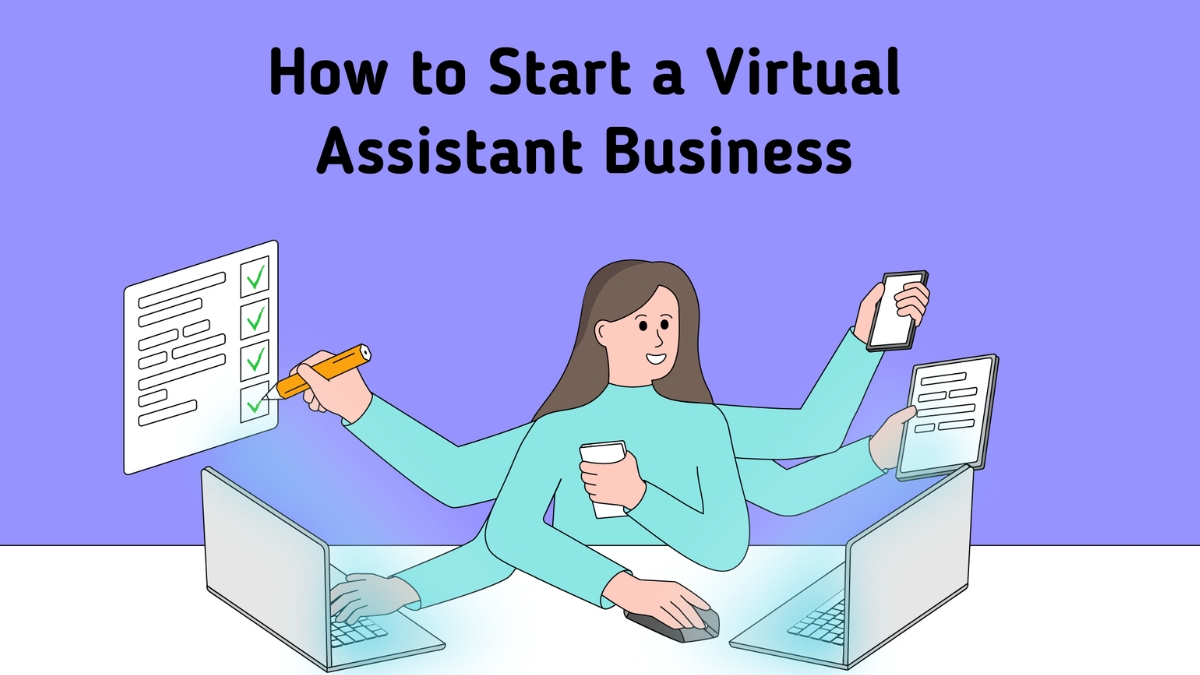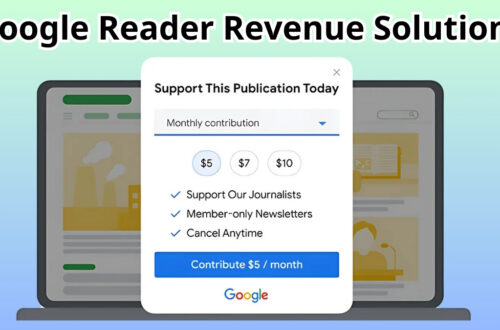
How to Become a Virtual Assistant in 2025: Complete Career Guide
Did you know that the virtual assistant industry is projected to reach $25.6 billion by 2025? With the rise of remote work, there’s never been a better time to launch your career as a virtual assistant! In this comprehensive guide, I’ll walk you through everything you need to know to start your VA journey, from essential skills and tools to finding your first clients. Whether you’re looking for a career change or want to build a flexible business from home, becoming a virtual assistant could be your path to professional freedom.
What is a Virtual Assistant and Why Should You Become One?
Let me tell you about the wild world of virtual assistance – and trust me, it’s nothing like the stuffy office admin jobs of the past! I’ve been in both worlds, and the difference is like night and day. Back when I started my career, I was chained to a desk from 9-5, drowning in paperwork and answering endless phone calls. Now? I could be working from a beach in Bali (though let’s be real, most days it’s just my home office in my PJs!).
So what exactly is a virtual assistant in 2025? Think of us as digital Swiss Army knives for businesses. We handle everything from managing inboxes and scheduling to running entire social media campaigns and managing complex projects. The cool thing is, we do it all remotely using cloud-based tools and video calls. According to recent industry data, virtual assistants now handle an average of 12-15 different task categories for their clients. That’s a far cry from the traditional secretary role!
One of my favorite client stories involves a small business owner who was working 80-hour weeks trying to do everything herself. Within three months of hiring me to manage her calendar, emails, and social media, she cut her workload in half and doubled her revenue. Why? Because she could finally focus on what she did best – growing her business. That’s the real magic of what we do as VAs.
Let’s talk numbers, because I know you’re curious. When I first started, I charged $25 per hour (which honestly was too low, but hey, we all make rookie mistakes!). Now, experienced VAs typically earn between $35-75 per hour, with specialized VAs in areas like tech or finance commanding even higher rates. I’ve seen some rockstar VAs pull in six figures annually. Not too shabby for a job you can do in your slippers!
The demand for virtual assistants has absolutely exploded since 2020. According to industry reports, the global virtual assistant market is expected to reach $25.6 billion by 2025. I’m seeing this firsthand – my inbox is constantly flooded with referrals, and I’ve had to start a waiting list for new clients. The biggest growth areas? Tech startups, online coaches, and e-commerce businesses. They’re all realizing that having a VA is like having a business superhero in their corner.

One thing that totally blows my mind is the variety of niches we can specialize in now. I work mainly with tech entrepreneurs, but I know VAs who specialize in everything from podcast management to Pinterest marketing. My friend Sarah started as a general VA but now exclusively manages Amazon FBA businesses for her clients – and she’s making triple what she did in her corporate job!
The flexibility is honestly life-changing. Last week, I had a doctor’s appointment in the middle of the day. No need to ask for permission or use PTO – I just adjusted my schedule and made up the work later that evening. That kind of freedom is priceless, especially if you’re juggling family commitments or other passions.
But here’s the real tea – being a VA isn’t all sunshine and rainbows. You need to be super organized, tech-savvy, and excellent at communication. Some days, you’re juggling tasks for multiple clients while trying to keep all their different systems and preferences straight. It can be challenging, but that’s also what makes it exciting. Every day is different, and you’re constantly learning new skills.
The most amazing part? The barrier to entry is relatively low. While having some administrative experience helps, what really matters is your willingness to learn and adapt. Most of the tools we use can be mastered through online courses or tutorials. I’ve seen people from all kinds of backgrounds – former teachers, retail workers, stay-at-home parents – successfully transition into virtual assistance.
If you’re looking at this career path, you’re definitely onto something good. The industry is booming, the earning potential is solid, and the lifestyle benefits are incredible. Just remember – success doesn’t happen overnight, but with dedication and the right approach, you can build a thriving VA business that gives you both freedom and financial stability.
Looking for a flexible job you can do from home, even with no prior experience? Becoming a Virtual Online Assistant might be the perfect opportunity for you! From managing emails and scheduling appointments to simple data entry, companies around the world are hiring remote assistants—and they’re willing to pay well for reliable help. Whether you’re a stay-at-home parent, student, or just someone looking for a side hustle, this is your chance to earn real income online.
👉 Click here to explore current openings and start getting paid as a virtual assistant today! CLICK HERE
Essential Skills and Qualifications for Virtual Assistants
First up, let’s talk about those core administrative skills that form the foundation of any successful VA business. The basics are non-negotiable: you absolutely need to be a wizard at email management and calendar scheduling. I remember my first week as a VA, when I accidentally double-booked my client’s calendar because I didn’t sync the time zones correctly. Talk about a rookie mistake! Now I live by my project management systems and use tools like Calendly to avoid those embarrassing slip-ups.
Organization isn’t just about keeping files tidy (though that’s super important too!). It’s about creating systems that scale. I use Asana for project management, but there are tons of great options out there like ClickUp, Trello, or Monday.com. The key is finding one that clicks with your brain. Trust me, trying to manage multiple clients using just your email inbox is a recipe for disaster – I learned that one the hard way!
On the technical side, you’ll want to get comfortable with the usual suspects: Google Workspace, Microsoft 365, and Zoom are pretty much standard these days. But here’s something that surprised me: basic design skills have become increasingly important. I’m not talking about becoming a graphic design pro, but knowing your way around Canva can be a game-changer. According to recent industry surveys, 68% of clients now expect their VAs to help with basic design tasks like social media graphics or presentation slides.
The tech stack for VAs has gotten pretty impressive. Here’s what I consider the essential tools:
- Project management: Asana, ClickUp, or Trello
- Communication: Slack, Zoom, Google Meet
- File management: Google Drive, Dropbox, OneDrive
- Design: Canva, Adobe Express
- Social media: Buffer, Hootsuite, or Later
- Password management: LastPass or 1Password
But here’s the thing – all the technical skills in the world won’t save you if you’re lacking in soft skills. Time management is absolutely crucial. I use the Pomodoro Technique and time-blocking to stay focused, especially when juggling multiple clients. And let me tell you, self-motivation is key when you’re working from home and Netflix is calling your name!

Communication skills might seem obvious, but they’re trickier in a virtual environment. You need to be extra clear and proactive. I always tell new VAs: “Over-communicate until your client tells you to scale back.” Better to send one too many updates than leave your client wondering what’s happening with their projects.
Problem-solving abilities? Oh man, you’ll use these every single day. Things will go wrong (they always do), and clients rely on us to figure it out. Last month, I had to rescue a client’s presentation when their file corrupted 30 minutes before a big meeting. Being able to think on your feet and stay calm under pressure is invaluable.
As for certifications, they’re not strictly necessary, but they can definitely give you an edge. The most respected ones I’ve seen are:
- FreeU VA Certification
- VAI Certification
- HubSpot Inbound Marketing Certification (it’s free!)
- Google Digital Marketing Certification
One certification that really helped me was the project management professional (PMP) course. While it was intensive, it completely transformed how I approach client work and project organization. However, don’t feel pressured to get certified right away. Many successful VAs start with practical experience and add certifications later.
Remember, the best skill you can develop is adaptability. The tools and technologies we use are constantly evolving. Just when you think you’ve mastered something, a new tool comes along and changes the game. That’s actually one of the things I love most about this field – there’s always something new to learn!
Above all, focus on developing a growth mindset. Every challenge is an opportunity to learn something new. I keep a “lessons learned” document where I record solutions to tricky problems I’ve encountered. It’s amazing how often those notes come in handy when similar situations pop up with other clients.
Choosing Your Virtual Assistant Niche
Picking your VA niche is kind of like choosing a character class in a video game – each specialization has its own unique strengths and opportunities! When I first started, I tried to be everything to everyone (spoiler alert: that was exhausting). After some trial and error, I discovered that specializing in tech and automation was my sweet spot.
Let’s break down some of the most popular VA niches I’m seeing in 2024. Social media management is absolutely booming right now. According to recent industry data, VAs who specialize in social media command 30% higher rates than general VAs. I’ve got a colleague who focuses solely on Instagram management for wellness coaches, and she’s consistently booked 3 months in advance. She started by managing just one coach’s account and built her expertise from there.
Email management is another hot niche, but it’s evolved way beyond just inbox organization. These days, email management VAs are basically communication strategists. They’re handling everything from customer service protocols to email marketing campaigns. One of my mentees transitioned from general VA work to email management specialization and doubled her income within six months!
The bookkeeping niche is interesting because it’s one of the highest-paying VA specializations. I’ve seen specialized bookkeeping VAs charging $75-100 per hour! But here’s the catch – you need to be super detail-oriented and willing to get additional certifications. QuickBooks certification is pretty much mandatory if you want to go this route.
Now, how do you figure out your perfect niche? I developed what I call the “PAI Method” – Passion, Aptitude, and Industry demand. First, list everything you genuinely enjoy doing (be honest with yourself!). Then, rate your skill level in each area. Finally, research the market demand for those services. When I did this exercise, I realized I loved automating repetitive tasks and learning new tech tools – hence my current niche!
Some emerging opportunities that have caught my eye lately:
- Podcast production and management
- Course creation and learning management systems
- Crypto and Web3 community management
- Virtual event planning and coordination
- Sustainability reporting and ESG documentation

The debate between being a specialist or generalist is pretty heated in the VA world. Here’s my take: start as a generalist to explore different areas, but aim to specialize within your first year. I made the mistake of staying general for too long because I was afraid of turning away potential clients. What actually happened when I specialized? I attracted better clients who valued my specific expertise and were willing to pay premium rates.
One thing that really helped me find my niche was keeping a “joy journal” during my first few months. Every time I completed a task, I’d rate it from 1-10 based on how much I enjoyed it. After a few months, patterns started emerging. Tasks involving automation and systems consistently scored high, while design work… well, let’s just say it wasn’t my calling!
Here’s a pro tip that saved me tons of time: interview other VAs in niches you’re considering. I spent hours on Zoom calls with specialized VAs, and their insights were invaluable. Most were surprisingly open about sharing their experiences – there’s enough work to go around in this growing industry!
The best piece of advice I got about choosing a niche came from my first mentor: “Your niche isn’t a prison; it’s a spotlight.” You can always expand or pivot later, but having a clear specialty helps you stand out in an increasingly crowded market. My tech automation niche has actually led to opportunities I never would have found as a generalist.
Remember, your chosen niche should energize you, not drain you. If you find yourself dreading certain types of tasks, that’s a pretty clear sign you might be in the wrong niche. It took me a while to admit that design work wasn’t my thing, but once I did, it was like a weight lifted off my shoulders.
The virtual assistant market is growing so rapidly that new niches are emerging all the time. Keep your eye on industry trends, but don’t chase every shiny new opportunity. Focus on building expertise in an area that aligns with your skills and interests, and the clients will follow.
Take your marketing to new heights with Email Marketing Expert EBooks! These guides teach you how to craft persuasive emails, grow your subscriber list, and optimize campaigns for maximum impact. Discover techniques for personalization, automation, and boosting open rates to drive more conversions. Ideal for marketers and business owners looking to build lasting customer relationships. Start turning emails into powerful tools for success today!
Setting Up Your Virtual Assistant Business
I remember staring at my computer screen the night before launching my VA business, completely overwhelmed by all the setup details! Looking back now, I wish someone had given me a straightforward roadmap. So, let me share what I’ve learned about getting your VA business up and running without losing your mind.
Let’s tackle the “boring but important” stuff first – the legal requirements. When I started, I thought I could just create a PayPal account and start working. Wrong! You’ll want to establish a proper business structure from day one. Most VAs start as sole proprietors because it’s the simplest option, but I eventually switched to an LLC for better liability protection. It costs about $100-300 to set up an LLC, depending on your state, and it’s totally worth the peace of mind.
Here’s what your legal checklist should look like:
- Choose your business structure (Sole prop or LLC)
- Register your business name (DBA if needed)
- Get an EIN from the IRS (it’s free!)
- Set up a business bank account
- Create a basic client contract (seriously, don’t skip this!)
Now for the fun part – setting up your tech stack! After trying what feels like every tool under the sun, here’s what I consider essential:
Project Management: I use ClickUp ($5/month) for organizing client work. Started with the free version and upgraded when I had steady income.
Time Tracking & Invoicing: Freshbooks ($15/month) is my go-to. The automated payment reminders have literally saved me thousands in late payments.
Communication:
- Zoom Pro ($14.99/month) for client meetings
- Slack (free) for daily communication
- Gmail Business ($6/month) for professional email
The total monthly investment for essential tools usually runs around $50-75. Not bad for running an entire business!
Creating your online presence was honestly one of the most challenging parts for me. I overthought it way too much at first! Here’s what actually matters: a clean, professional website that clearly states what you do and who you serve. I built mine using Squarespace because their templates are gorgeous and user-friendly. Your website should include:
- Your services and packages
- Your niche/specialization
- Client testimonials (even if they’re from previous jobs)
- A professional headshot
- A contact form
LinkedIn has been absolutely crucial for finding clients. Pro tip: optimize your headline with your niche and specific services instead of just putting “Virtual Assistant.” Mine reads “Tech Automation Specialist | Systems & Operations VA for SaaS Companies.” This simple change tripled my inbound inquiries!

Now, let’s talk money – everyone’s favorite topic! Setting your rates can feel like throwing darts blindfolded, but here’s a practical approach: Calculate your desired annual income, add 30% for taxes and expenses, then divide by your billable hours (hint: it’s not 40 hours/week – think more like 25-30 to account for admin time).
When I started, I offered hourly rates ($25-35). Big mistake! Now I use value-based packages that typically range from $500-2000 monthly. Here’s my current package structure:
Basic Support Package ($500/month):
- 10 hours of VA support
- Email management
- Calendar management
- Basic admin tasks
Business Growth Package ($1000/month):
- 20 hours of VA support
- Everything in Basic
- Project management
- Systems optimization
- Basic social media management
VIP Package ($2000/month):
- 40 hours of VA support
- Everything in Growth
- Tech automation
- Analytics reporting
- Strategy sessions
One lesson I learned the hard way: don’t undercharge just because you’re new! Research market rates in your niche and position yourself accordingly. When I raised my rates from $25 to $45 per hour, I actually got better clients who respected my time more.
Remember, your business setup doesn’t need to be perfect from day one. Start with the essentials, and add tools and systems as you grow. The most important thing is to have a professional foundation that gives your clients confidence in working with you. Trust me, they care more about your ability to solve their problems than whether you have the fanciest website in town!
Finding and Landing Your First VA Clients
The biggest surprise for me was that LinkedIn turned out to be my golden ticket, not the freelance platforms I originally assumed I’d use. Here’s what worked like magic: I started engaging meaningfully on posts from potential clients in my target market (tech entrepreneurs) about 3-4 times a week. Not just “Great post!” comments, but actual thoughtful insights. Within two weeks, I had my first client slide into my DMs asking about my services!
Speaking of freelance platforms, let’s talk about where to find those initial opportunities. Upwork can be a gold mine if you approach it strategically. I landed my second client there by focusing only on jobs posted within the last hour and crafting super-personalized proposals. Pro tip: sort by ‘client rating’ to avoid the headache of difficult clients when you’re just starting out. Other platforms worth checking out:
- Hire My Mom (great for parent-friendly clients)
- Virtual Assistant Forums
- Cloud Peeps
- Facebook groups specific to your niche
Now, about that pitch – I bombed so many before I figured out the winning formula! The secret sauce? Making it 80% about their specific needs and only 20% about you. Here’s the template that got me a 40% response rate:
“Hi [Name], I noticed you’re looking for help with [specific pain point from their post]. I recently helped another [similar business type] solve this by [specific solution]. Would you be open to a quick chat about how I could do the same for your business? For context, I specialize in [your niche] and have [relevant experience].”
The proposal stage is where I see most new VAs trip up. They either write a novel or give one-liners – neither works! My most successful proposal format looks like this:
- Brief introduction (2 sentences)
- Their specific problem restated (shows you paid attention)
- Your relevant solution with a concrete example
- Suggested next steps
- 2-3 relevant questions about their business

Client interviews used to terrify me until I realized something important – they’re not just interviewing you, you’re interviewing them too! I learned this after taking on a client who turned out to be a micromanager (yikes!). Now I have my own set of questions ready:
- What’s your communication style preference?
- How do you measure success in this role?
- What would a typical week look like?
- What’s your biggest challenge right now?
The onboarding process is crucial – get this right, and you’ll have happy clients singing your praises! I created a simple but effective system:
- Welcome questionnaire (passwords, brand guidelines, key contacts)
- 30-minute kick-off call to set expectations
- Process documentation shared in their preferred format
- Weekly check-ins for the first month
One mistake I made early on? Not having a trial period in my contracts. Now I always include a 2-week trial period – it protects both parties and reduces the pressure on that initial commitment. It’s helped me land several clients who were on the fence!
The most valuable lesson I’ve learned about finding clients is this: consistency trumps perfection. I committed to reaching out to 3 potential clients every single day, even if my pitches weren’t perfect. Some days felt like shouting into the void, but suddenly, opportunities started snowballing.
Remember that first client who found me through LinkedIn? They referred me to two other business owners, and those referrals became my bread and butter. In fact, 80% of my current clients came through referrals from happy clients. The key was delivering exceptional work even when the initial projects were small.
Marketing yourself as a VA isn’t about having the fanciest website or the biggest following – it’s about consistently showing up where your ideal clients hang out and demonstrating that you understand their problems. Start there, and the clients will come!
Growing and Scaling Your VA Business
Raising your rates is probably the scariest part of growing your business. I remember feeling absolutely terrified to tell my first client I was increasing my rates! But here’s what I discovered: it’s all about timing and value demonstration. I created what I call the “Value Vault” – a document where I track every win, improvement, and positive result I create for clients. When it came time to raise rates, I could show them exactly how I’d saved them 10 hours a week or increased their social media engagement by 150%.
Let me share a specific example: I helped one client automate their client onboarding process, cutting it from 2 hours to 15 minutes per new customer. When I showed them that this saved them approximately $5,000 per month in time value, my rate increase from $35 to $50 per hour suddenly seemed like a bargain!
Building a referral system was a complete game-changer for my business. Here’s what actually works (not just the generic advice you see everywhere):
- Create a “client delight” workflow (I send personalized gifts at 3-month and 1-year milestones)
- Establish a referral incentive program (I offer existing clients 10% off their next month’s services for successful referrals)
- Regular check-ins with specific metrics showing your impact
Time management? Oh boy, did I learn this one the hard way! I used to think I could handle everything manually, until I found myself working until midnight most days. Now I swear by what I call the “Power Hour Planning” method:
- First 30 minutes of each day for planning and prioritization
- 90-minute focused work blocks with 15-minute breaks
- No client calls on Mondays or Fridays (game-changer!)
Speaking of time management, here’s a productivity hack that transformed my business: I started tracking literally everything I did for two weeks straight. The results were eye-opening! I discovered I was spending 5 hours a week just on email organization that could be automated. Now I use text expanders and email templates that save me about 15 hours a month.
When it comes to scaling beyond yourself, I tried both subcontracting and building an agency. The subcontracting route worked better for me initially. I started by bringing on one subcontractor for specialized tasks like graphic design, which I absolutely dreaded doing myself. The key was finding someone whose work quality matched or exceeded mine – I interviewed 12 people before finding the right fit!

Here’s my actual revenue progression to give you a realistic picture: Year 1: $35k (solo VA) Year 2: $72k (raised rates, better clients) Year 3: $125k (added first subcontractor) Year 4: $200k+ (built a small team)
One unexpected challenge of scaling was managing client expectations while growing. I learned to be super transparent about my business model. Now I actually use it as a selling point – clients love knowing they have access to a team of specialists rather than just one generalist VA.
The biggest mistake I made while scaling? Trying to grow too fast. I took on three new clients in one month, thinking I could handle it with my new team. Spoiler alert: it was a disaster! Now I have a strict rule: only one new client every six weeks, maximum. This gives us time to properly onboard and systematize everything.
Something nobody talks about is the emotional side of scaling. There were days I seriously considered going back to a 9-5 job because managing a team felt overwhelming. What helped was joining a mastermind group with other growing VA business owners. We meet virtually every month to share challenges and solutions, and it’s been absolutely invaluable.
If you’re thinking about scaling your VA business, start by documenting everything you do. I mean everything! I spent two months creating detailed SOPs for all my processes before bringing on my first team member. It was tedious, but it made training so much easier and maintained quality as we grew.
Remember, scaling doesn’t necessarily mean building an agency. Some of the most successful VAs I know have stayed solo but scaled through premium pricing and high-end service packages. The key is choosing a growth model that aligns with your personal goals and lifestyle preferences.
Starting your journey as a virtual assistant can open doors to endless opportunities in the digital economy. By focusing on developing your skills, choosing the right niche, and implementing effective marketing strategies, you can build a successful VA business that aligns with your lifestyle goals. Ready to take the first step? Begin by assessing your skills and selecting your niche – your future as a virtual assistant starts now!
In today’s digital world, remote work is no longer just a trend—it’s a lifestyle. Becoming a virtual assistant gives you the freedom to work from anywhere, set your own hours, and earn steady income helping businesses with simple online tasks. Whether you’re starting from scratch or looking for a new direction, this opportunity is both accessible and rewarding.
👉 Don’t wait to take control of your time and income.
Click below to start your journey as a paid virtual assistant today! CLICK HERE





